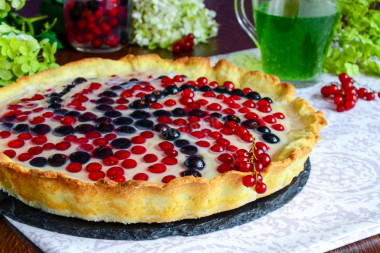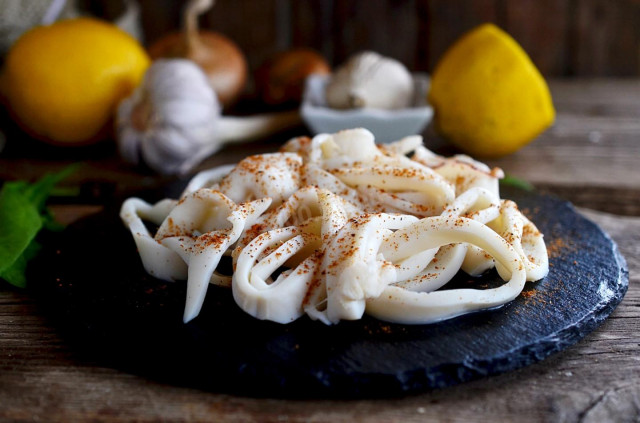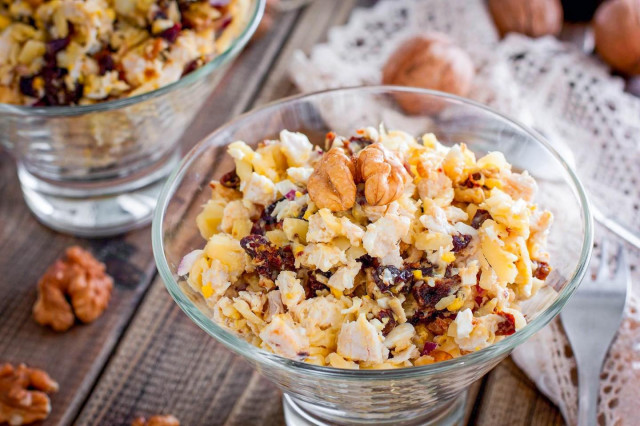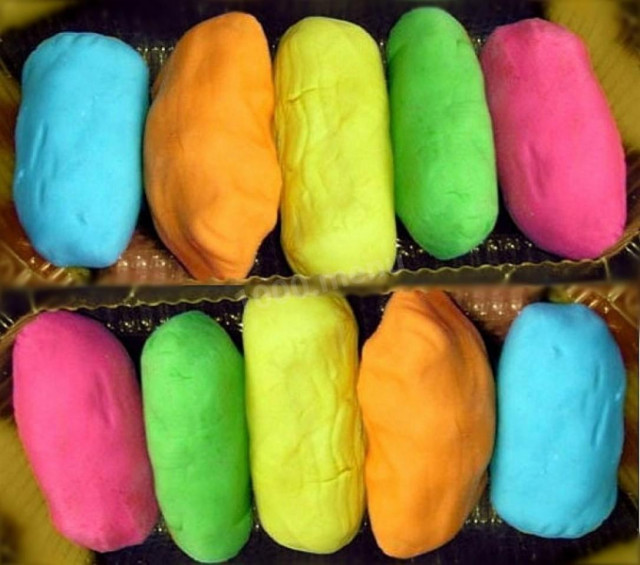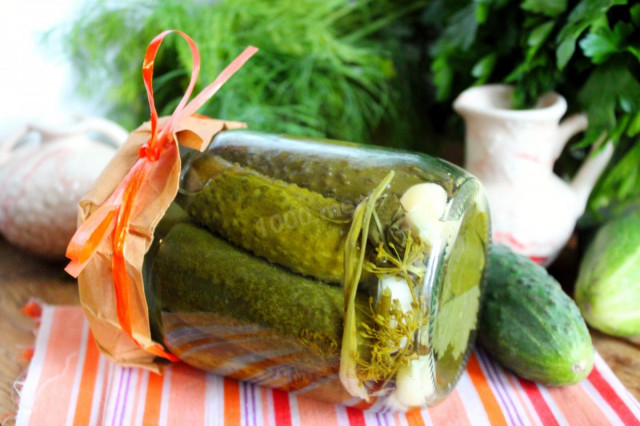Composition / ingredients
Step-by-step cooking
Step 1:

How to make a classic Tyrolean pie? First of all, prepare the dough. Prepare the products for him. Take the highest quality butter, natural, without vegetable additives, corresponding to GOST. Cool the oil well before cooking, cutting it into cubes in advance.
Step 2:
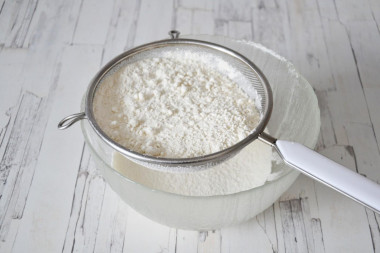
How to make dough? Take a large bowl. Sift flour into it. It is important to sift the flour to saturate it with oxygen. Then the baking will turn out to be airy and will rise well when baking.
Step 3:

Add sugar and diced cold butter to the flour.
Step 4:
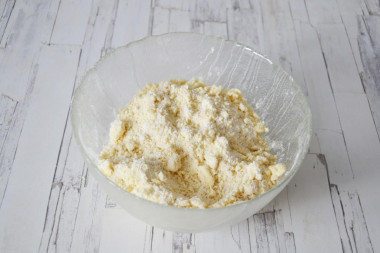
With your hands, rub the flour with butter to the state of crumbs.
Step 5:
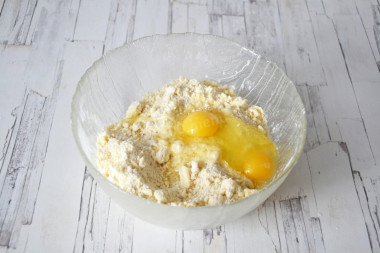
Add an egg (I came across such a happy one with two yolks) and again knead a smooth elastic dough with your hands. Try to do this as quickly as possible — the colder the butter remains, the more crumbly and delicious the dough will be.
Step 6:
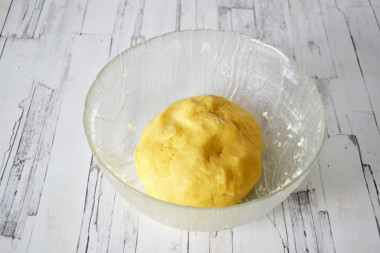
Roll the dough into a ball and put it in the refrigerator for 1 hour.
Step 7:

Then take out the dough and spread it on the bottom and sides of the mold. You can roll it out with a rolling pin, or you can do it again with your hands, cutting thin plates from the dough and laying out the shape with them. The diameter of the mold can be from 22 to 26 cm .
Step 8:

Put parchment on top and pour the load — dry beans, peas or special balls. This method will save the dough from swelling during baking. Bake the cake for 20 minutes at t 200 ° C.
Step 9:

Cool the finished cake and remove the cargo.
Step 10:
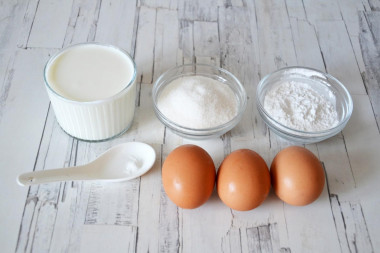
Prepare the cream. Prepare the products for him. Pre-wash the eggs. Milk can be of any fat content. Starch — potato. If you take corn, then double its amount.
Step 11:

How to make cream? Pour milk into a saucepan with a thick bottom and heat it over low heat.
Step 12:
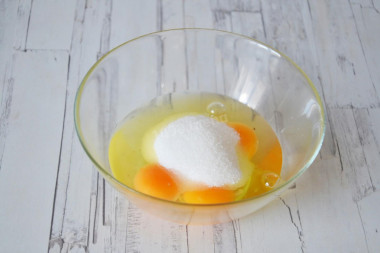
Break the eggs into a separate bowl and whisk them with sugar until a fluffy light mass.
Step 13:
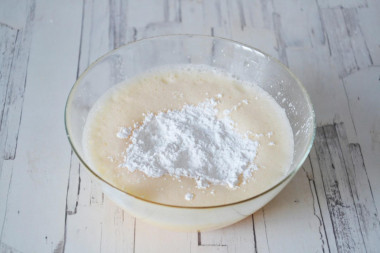
Add starch to them, mix.
Step 14:
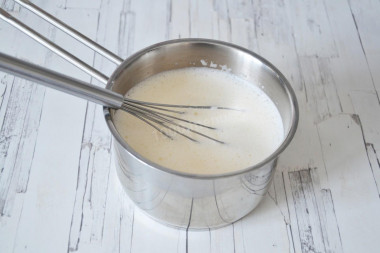
Pour the warm milk into the beaten eggs and mix. Pour the egg-milk mass into the saucepan again.
Step 15:
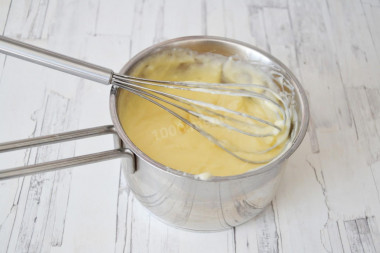
Return the saucepan to the stove and, stirring, cook the cream over low heat until thickened.
Step 16:
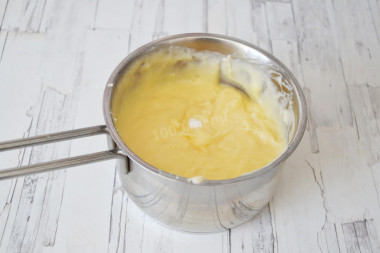
Remove the cream from the heat, add the vanilla and stir.
Step 17:
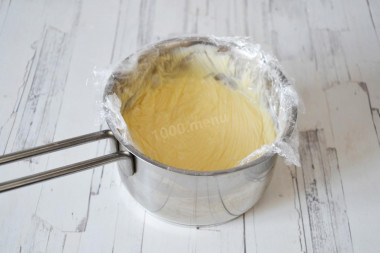
Cool the cream. It is better to cover it with cling film "in contact " so that the cream does not get hot.
Step 18:
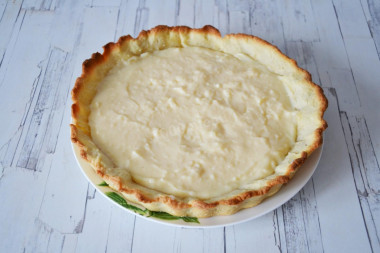
Put the cooled cream on the cake and smooth it out.
Step 19:

Prepare the filling. Wash the berries well and dry them. Any berries and fruits will do, I took red and black currants.
Step 20:
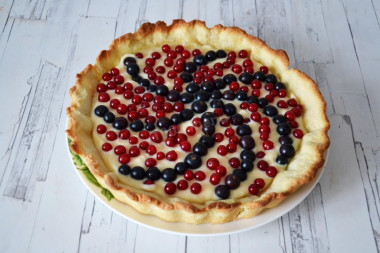
Put the berries on top of the cream. You can do it beautifully, in the form of a drawing.
Step 21:
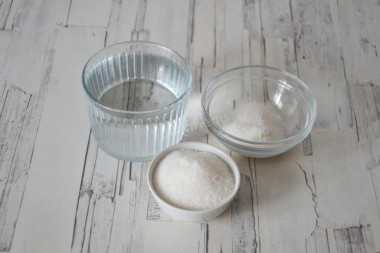
Prepare the filling. Prepare the jelly for the cake according to the instructions on the package. I did this: I combined 10 g of jelly powder, 50 g of sugar and 200 ml of water and brought it, stirring, to a boil. You can also prepare a filling from ordinary gelatin or agar-agar.
Step 22:
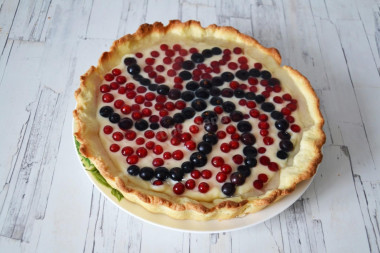
Fill the cake with transparent jelly and put it in the refrigerator for 2-3 hours. During this time, the filling will harden well, and the cream will stabilize. Then serve the pie to the table. Bon appetit!
Step 23:

If you have some berries and jelly left, you can make such a light dessert.
According to legend, the Austrian emperor Franz Joseph got lost while hunting in the Tyrolean forests and went to a small peasant village in search of a way to the house. Entering one of the houses, the hungry monarch asked the owners to feed him. The only dish the hostess had was this pie, made according to an old family recipe. The emperor liked the pie so much that later this peasant family became a supplier of pies to the palace. Whether this is true or not is not known for certain. But the legend is beautiful. Just like the pie itself.
Be sure to wash the eggs before use, as even the seemingly clean shell may contain harmful bacteria. It is best to use food detergents and a brush.
What is the difference between vanilla, vanillin, vanilla extract and vanilla sugar, how to use and replace them correctly, so as not to spoil the taste of the dish , read in this article .
Keep in mind that everyone's ovens are different. The temperature and cooking time may differ from those specified in the recipe. To make any baked dish successful, use useful information about the features of ovens !
Caloric content of the products possible in the composition of the dish
- Whole cow's milk - 68 kcal/100g
- Milk 3.5% fat content - 64 kcal/100g
- Milk 3.2% fat content - 60 kcal/100g
- Milk 1.5% fat content - 47 kcal/100g
- Concentrated milk 7.5% fat content - 140 kcal/100g
- Milk 2.5% fat content - 54 kcal/100g
- Chicken egg - 157 kcal/100g
- Egg white - 45 kcal/100g
- Egg powder - 542 kcal/100g
- Egg yolk - 352 kcal/100g
- Ostrich egg - 118 kcal/100g
- Whole durum wheat flour fortified - 333 kcal/100g
- Whole durum wheat flour, universal - 364 kcal/100g
- Flour krupchatka - 348 kcal/100g
- Flour - 325 kcal/100g
- Granulated sugar - 398 kcal/100g
- Sugar - 398 kcal/100g
- Jelly - 80 kcal/100g
- Starch - 320 kcal/100g
- Butter 82% - 734 kcal/100g
- Amateur unsalted butter - 709 kcal/100g
- Unsalted peasant butter - 661 kcal/100g
- Peasant salted butter - 652 kcal/100g
- Melted butter - 869 kcal/100g
- Water - 0 kcal/100g
- Vanillin - 288 kcal/100g
- Black currant - 38 kcal/100g
- Blackcurrant, freshly frozen - 44 kcal/100g
- Red currant - 39 kcal/100g


